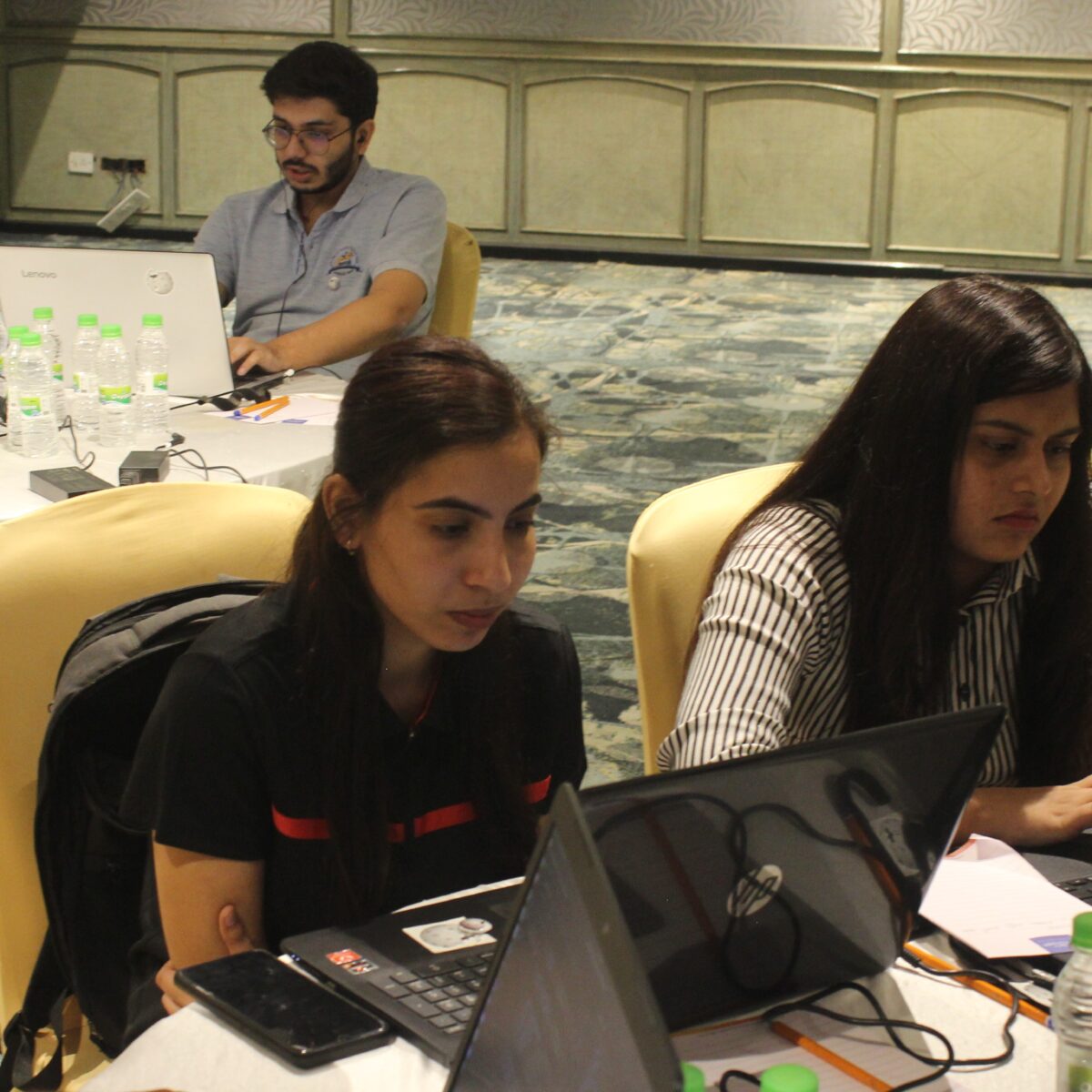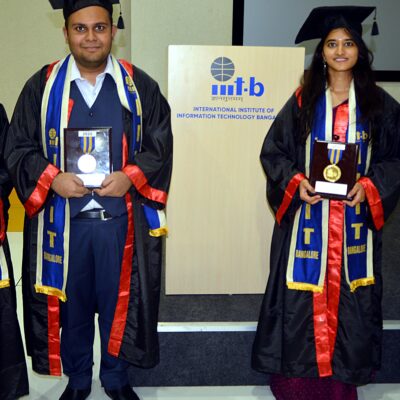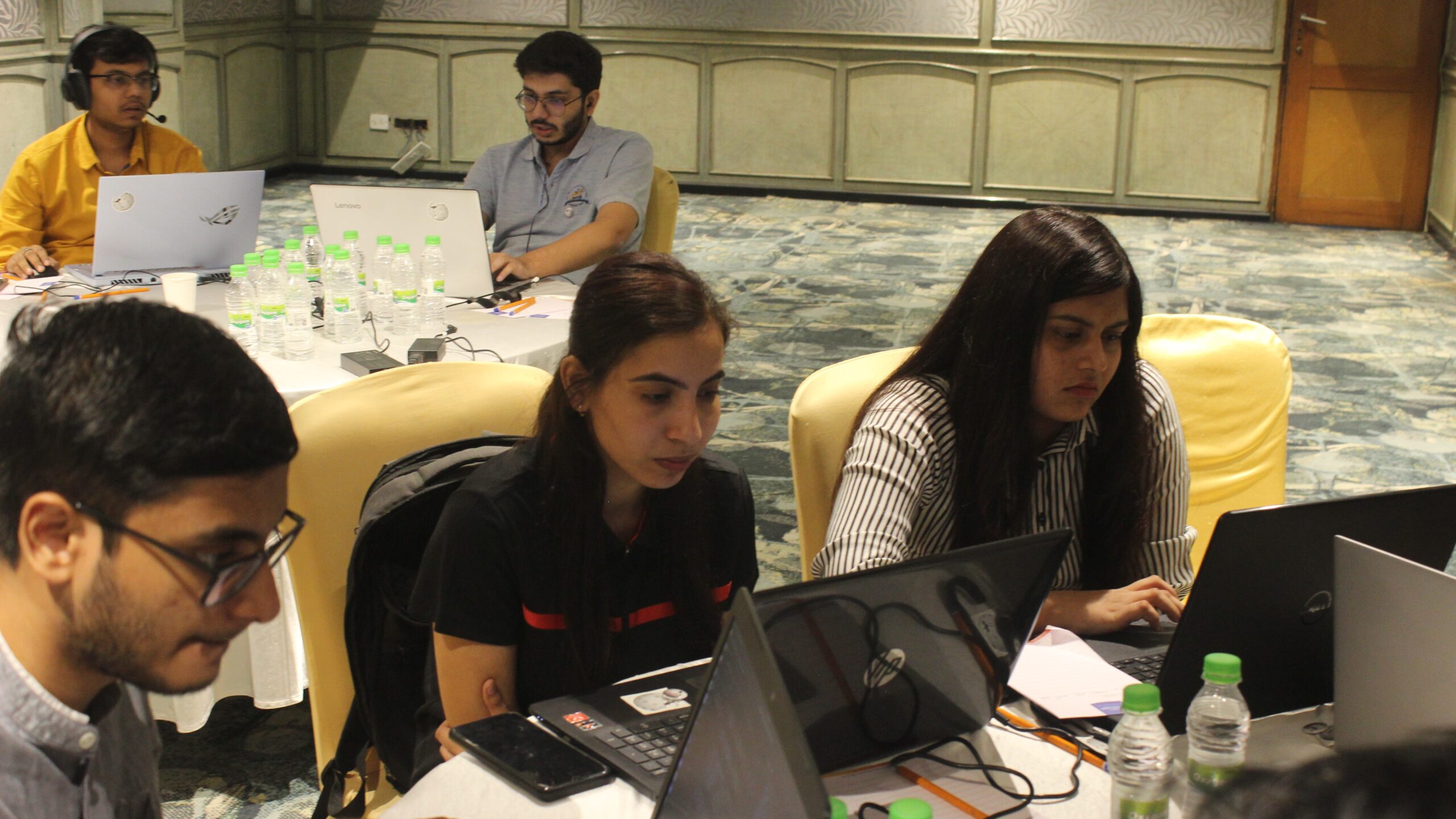
On 22 January 2025, the Ministry of Electronics and Information Technology (MeitY) released the report titled ‘Estimation and Measurement of India’s Digital Economy’.
This is the first study to assess/measure the value addition and employment generated by India’s burgeoning digital sector.
According to the report “India’s digital economy is poised to grow nearly twice as fast as the overall economy, contributing nearly one-fifth of the country’s national income by 2029-2030”
The Indian economy has been digitizing at a remarkable pace over the past decade. According to the ICRIER’s State of India Digital Economy Report 2024, India is the third most digitized country in the world in terms of economy-wide digitization and 12th among G20 countries in terms of individual user digitization.
Nonetheless, there are no credible and updated estimates of the digital economy in national income and employment.
The measuring and understanding of the digital economy promotes economic growth, employment and sustainable development, which are important for both policymakers and the private sector.
This can help customize resources and adopt appropriate growth strategies.
However, the intersection and integration of digital technologies make the concept of a unique digital economy difficult to define and measure. Furthermore, the traditional economic accounting system is not suitable for directly measuring the new economy.
This problem is not unique to India. Some countries have tried to measure their digital economies, and even these efforts are still ongoing.
This report uses a globally agreed methodology – a framework developed by the Organisation for Economic Co-operation and Development (OECD) and the Asian Development Bank (ADB) – to estimate the size of India’s digital economy, including its share of national income and total employment.
With the release of this data, India becomes one of the few countries to use the OECD framework to provide an updated estimate of the size of its digital economy, and the first among developing countries to do so.
The report goes beyond the OECD approach and also includes the digital part of traditional sectors such as trade, banking, financial services and insurance (BFSI) and education.
Current contribution and projections
India’s digital economy contributed 11.74% to national revenue in 2022-23, with projected growth to 13.42% by 2024-25, according to the report.
The digital economy contributed roughly Rs. 28.94 lakh crore (approximately US$ 368 billion) to India’s GVA and Rs. 31.64 lakh crore (approximately US$ 402 billion) to its GDP in 2022-23.
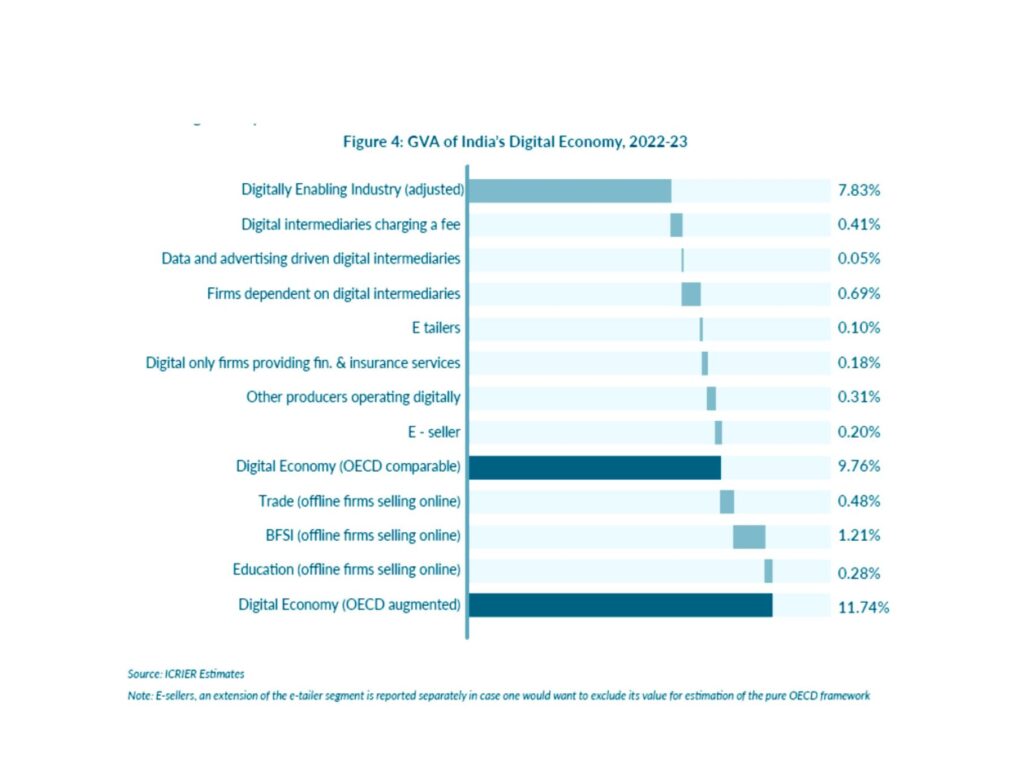
While the traditional ICT industry is still the largest part of the digital economy, the digitalization of digital platforms and brick and mortar sectors is growing rapidly.
Information and communication services, telecommunications, electronics, and computer and communication equipment manufacturing together account for 7.83% of the national GVA.
Banking, financial services, insurance, trade, and education sectors, along with Big Tech and digital platforms, each account for about 2% of the GVA.
This clearly shows that the Indian digital economy is developing evenly, surpassing the scope of the ICT industry and spreading by digitizing all parts of the economy.
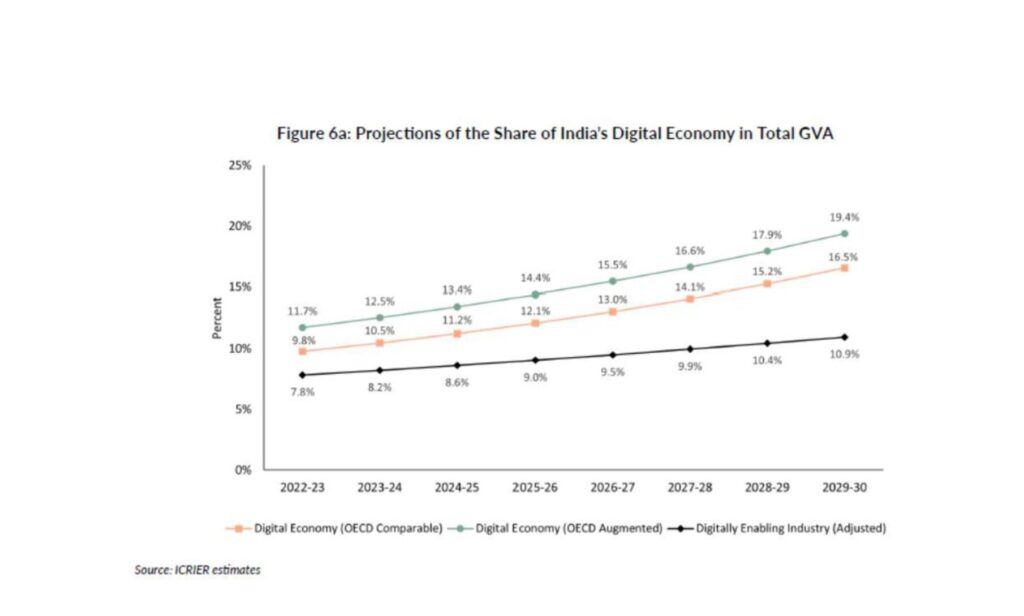
The report forecasts that India’s digital economy is expected to grow almost twice as fast as the overall economy and contribute almost a fifth of national income by 2029-30.
This means that in less than six years, the digital economy will account for a larger share of the country than agriculture or manufacturing.
In the short run, the highest growth is likely to come from the growth of digital intermediaries and platforms, followed by higher digital diffusion and digitalisation of the rest of the economy.
This will eventually lower the share of digitally enabling ICT industries in the digital economy.
Employment in the digital economy
In 2022-23, the digital economy employed 14.67 million people, accounting for 2.55% of India’s total labour force. In comparison, agriculture accounted for 263.6 million (or 45.8% of employment), while manufacturing employed 65.6 million people (or 11.4% of the workforce).
Recommendation of the Report
The report has recommendations that are divided into three categories. They are:
- Narrowing data gaps, both by collating and harmonising available data and collecting new data on the digital activities of enterprises and individuals;
- Using new data to build digital SUTs that can enable the visibility of digitalisation in macroeconomic statistics; and
- Engaging with the OECD to improve the measurement framework and facilitate global alignment.
The report makes specific recommendations to improve the quality and coverage of national digital economy statistics, as well as suggestions for accelerating India’s economic digitalisation.

